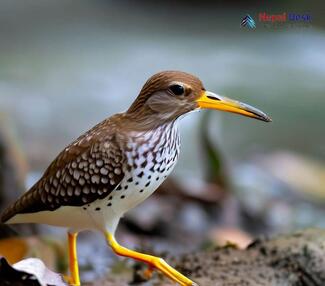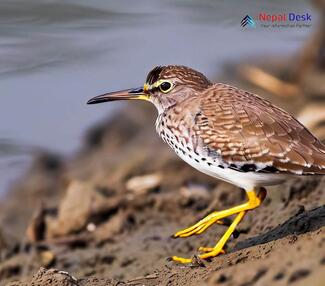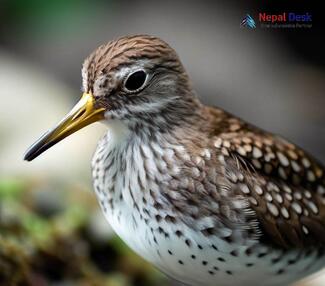The birding community is abuzz with excitement every time a rare or fascinating species is spotted. One such enigmatic creature that has captured the attention of bird enthusiasts across the globe is the Spotted Sandpiper (Actitis macularius). This migratory shorebird has a widespread presence, often leaving birders in awe of its unique behavior and appearance. Let us look at various aspects of this bird and its presence in Nepal:
Demystifying the Spotted Sandpiper
The Spotted Sandpiper is a medium-sized wader, sporting a characteristic bobbing motion while walking or foraging along the shoreline. Its plumage varies seasonally with distinctive dark spots adorning its bright white underparts, earning it its name during breeding season. Outside of the breeding season, Actinis macularius displays a solid grayish-brown upperpart, with an immaculate grayish-white underpart.
One of the fascinating aspects of this bird species is its unusual breeding system known as polyandry. Female Spotted Sandpipers are known for their aggressive territorial behavior and often mate with multiple males during the breeding season. The males then take up parental duties, incubating the eggs and rearing the chicks until they fledge.
A Journey to Nepal: The Spotted Sandpiper's Presence
As a migratory bird species, the Spotted Sandpiper can be found across various locations in North and South America throughout the year. However, occasional vagrant appearances have also been reported in Europe and Asia, including Nepal.
While not commonly sighted in Nepal, birdwatchers have documented sporadic encounters with this species throughout different regions within this picturesque country. They typically forage alongside rivers and lakes at higher altitudes during migration. The freshwater wetlands and protected areas in Nepal provide an ideal habitat for these intrepid travelers, attracting bird enthusiasts from all over to catch a glimpse of this elusive shorebird.
When and Where to Spot Actitis Macularius in Nepal
The best time for birding enthusiasts to visit Nepal and observe the Spotted Sandpiper is between October and January when migratory birds are most likely to make their appearance. Some popular locations for spotting this unique species include:
- Chitwan National Park: This UNESCO World Heritage Site boasts diverse habitats, making it a prime destination for birdwatchers.
- Koshi Tappu Wildlife Reserve: A renowned sanctuary for waterbirds, Koshi Tappu offers ample opportunities to spot various magnificent shorebirds, including the Spotted Sandpiper.
- Phewa Lake, Pokhara: Not only does this tranquil lake offer picturesque views, but it is also home to a plethora of migratory birds during the cooler months.
In Conclusion
The Spotted Sandpiper (Actitis macularius) remains a fascinating topic of study among bird enthusiasts around the world. While rare sightings of this captivating species have been reported in Nepal, those who are fortunate enough to encounter one should seize the opportunity to observe its unique behaviors and appearance up close. For seasoned birdwatchers and casual nature lovers alike, the quest for the Spotted Sandpiper in Nepal is undeniably an adventure worth pursuing.




